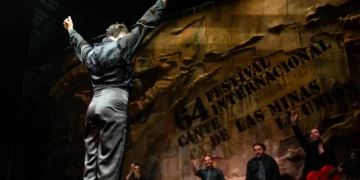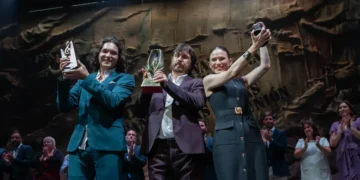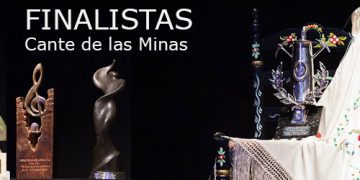|
XLIX FESTIVAL INTERNACIONAL
DEL CANTE DE LAS MINAS Niña Pastori Friday, August 7th, 2009. 10:45pm. La Unión
|
||||||||||||||||||
|
Text: Estela Zatania Among flamenco fans, “going to the mines” has special meaning not related to mining at all, except by allusion. In fact, I’m writing from “the mines” right now, that is, the venerable Festival International del Cante de las Minas which each August turns the sleepy town of La Unión (Murcia) into the epicenter of flamenco. Lots of new wrinkles this year, most notably the desire of the organization to update the formula employed during the event’s first half-century. The structure of five gala shows and four days devoted to the contest has remained intact, but there is a new category with corresponding prize: “El Filón” for instrumentalists. Another novelty is the opening of the Agrupavicenta mine which from 1890 to the middle of the twentieth century was part of a mining boom that at the turn of the last century caused La Unión to be called “Nueva California”, which in turn triggered the cultivation and conservation of mining cante. This space has now been made accessible to the public and is one of the festival’s venues. The inside of the mine is scheduled to receive a flamenco fashion show with the performance of the group “Diamante Negro”, and a recital of mining cante by Granada singer Juan Pinilla, 2007 winner of the coveted Lámpara Minera, with the guitar accompaniment of Antonio Muñoz Fernández. Friday’s schedule began with the presentation of the book “Antonio Grau – Rojo El Alpargatero Hijo – El úiltimo de una saga flamenca” by José Gelardo Navarro. Following this, cultural prizes were awarded in the following categories: PROSE: Miguel de Mora for his book “La voz de los Flamencos, retratos y autorretratos”.
Shortly afterwards, at the Cathedral of Cante, the universal flamenco singer from San Fernando, the queen of flamenco pop, María Rosa García “Niña Pastori”. The neighborhood girl who was promoted by Camarón de la Isla himself two decades ago, came to La Unión with her group (Samara Amaya and Ana Núñez, Katumba, Ramón Torres, Antonio Ramos ‘Maca’, Adrián Schinoff, Manuel Monge, and of course, Chaboli), looking all the glamourous star she now is. At the artist’s request, there were no chairs, which gave all the feeling of a rock concert. Some flamenco fans balked at having to pay 25 euros and not being able to sit down, but the old market made over into a large theater was packed with Pastori’s diehard fans who were delighted to be there, sang along with their favorite songs, applauded energetically and danced in the aisles. In addition to her pop repertoire, the charismatic singer applied her irresistible Camarón sound to bulerías, alegrías and stylized fandangos de Huelva. When it was over, the euphoric audience didn’t give a standing ovation, because they were already standing, but the success could certainly be described as smashing. Right at the exit, and satisfying the appetite of those who wanted to hear something more conventional, there was a cante recital in the plaza with singer Antonio Ayala “El Rampa”, accompanied on the guitar by Rosendo Fernández. |
Descubre más desde Revista DeFlamenco.com
Suscríbete y recibe las últimas entradas en tu correo electrónico.





































